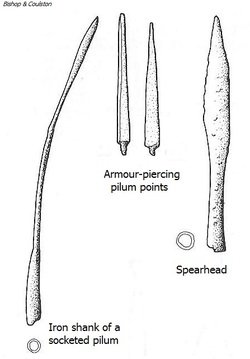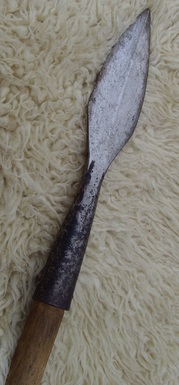PILUM & SPEAR
|
The heavy javelin was a distinctive weapon of the Roman legions. Its long metal shank added weight and power to the weapon as it hit the target; a hardened iron point punched through armour. A side effect of having a metal shank was that it bent out of shape if it hit the ground or a shield, rendering a shield useless, or the pilum unable to be thrown back.
There were three types of pilum in use in the 3rd century: light pila, heavy pila and weighted pila. A light pilum was socketed and used a simple spear-like wooden shaft. A heavy pilum used a wooden shaft with a square mid section used to receive the flat metal tang of the iron head. The tang was locked in place with two iron rivets. The weighted pilum could be either a light or heavy pilum that featured a weighted ball attached to the wooden shaft. Academics believe the weight added power to the throw, but are unsure as to what the weight was made of. Was it wood, iron or lead? Above This socketed pilum, two armour-piercing pilum points and wide-bladed spear were all found at the Caerleon legionary fortress in Wales.
Below Fortunatus' spear. |



